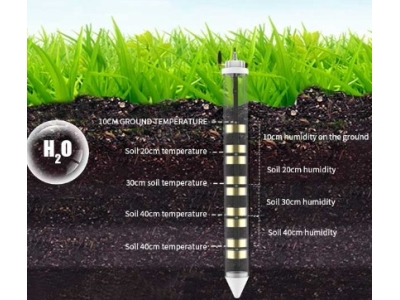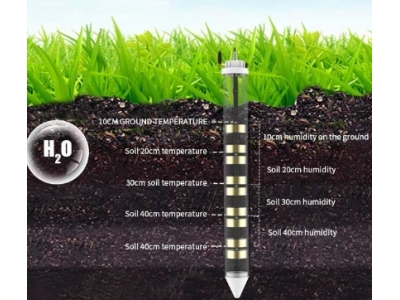Agriculture has been a crucial industry for centuries, providing food for the world's population. However, traditional farming practices are facing significant challenges, including climate change, water scarcity, and soil degradation. To overcome these challenges, farmers are turning to smart agriculture, also known as precision agriculture, which uses data to make informed decisions about planting, irrigation, fertilization, and other aspects of crop production. In this article, we will explore how soil sensors are revolutionizing agriculture with data-driven decisions.
What are Soil Sensors?

Soil sensors are devices that measure different parameters of the soil, such as moisture, temperature, and nutrient levels. These sensors can be placed in the soil at different depths, allowing farmers to monitor the soil conditions at different levels. The data collected by soil sensors can be used to make informed decisions about irrigation, fertilization, and other aspects of crop production.
How Soil Sensors are Revolutionizing Agriculture
Soil sensors are revolutionizing agriculture by enabling data-driven decisions. By collecting data on soil moisture, temperature, and nutrient levels, farmers can make informed decisions about when and how much to irrigate their crops, how much fertilizer to apply, and when to plant their crops. This approach can lead to higher yields and better-quality crops.
For example, soil sensors can be used to monitor the moisture levels in the soil. By collecting data on the moisture levels, farmers can determine when to irrigate their crops. This approach can reduce water use and improve water efficiency, which is critical in areas with water scarcity.
Soil sensors can also be used to monitor the nutrient levels in the soil. By collecting data on the nutrient levels, farmers can determine when and how much fertilizer to apply. This approach can reduce the amount of fertilizer used, reducing the environmental impact of farming.
The Benefits of Soil Sensors
Soil sensors offer several benefits for farmers and the environment. By using soil sensors, farmers can:
Improve Crop Yields: Soil sensors can help farmers to optimize irrigation and fertilization, leading to higher crop yields.
Reduce Water Use: Soil sensors can help farmers to reduce water use by optimizing irrigation.
Reduce Fertilizer Use: Soil sensors can help farmers to reduce the amount of fertilizer used, reducing the environmental impact of farming.
Improve Soil Health: Soil sensors can help farmers to monitor soil health, leading to better soil management practices.
Increase Profitability: By optimizing crop yields and reducing input costs, soil sensors can increase profitability for farmers.
Challenges to Adoption
While soil sensors offer several benefits, there are challenges to their widespread adoption. One of the main challenges is the cost of the sensors. Soil sensors can be expensive, making them inaccessible for many small-scale farmers. However, as technology becomes more affordable and accessible, the cost of soil sensors is likely to decrease.
Another challenge is the complexity of the data collected by soil sensors. Farmers need to have the knowledge and skills to interpret the data collected by soil sensors and make informed decisions based on the data. This requires training and education, which may be a barrier for some farmers.
Conclusion
Soil sensors are revolutionizing agriculture with data-driven decisions. By collecting data on soil moisture, temperature, and nutrient levels, farmers can make informed decisions about irrigation, fertilization, and other aspects of crop production. This approach can lead to higher yields and better-quality crops, reduce water and fertilizer use, improve soil health, and increase profitability for farmers. While there are challenges to the widespread adoption of soil sensors, the future of agriculture looks promising as technology becomes more affordable and accessible.






